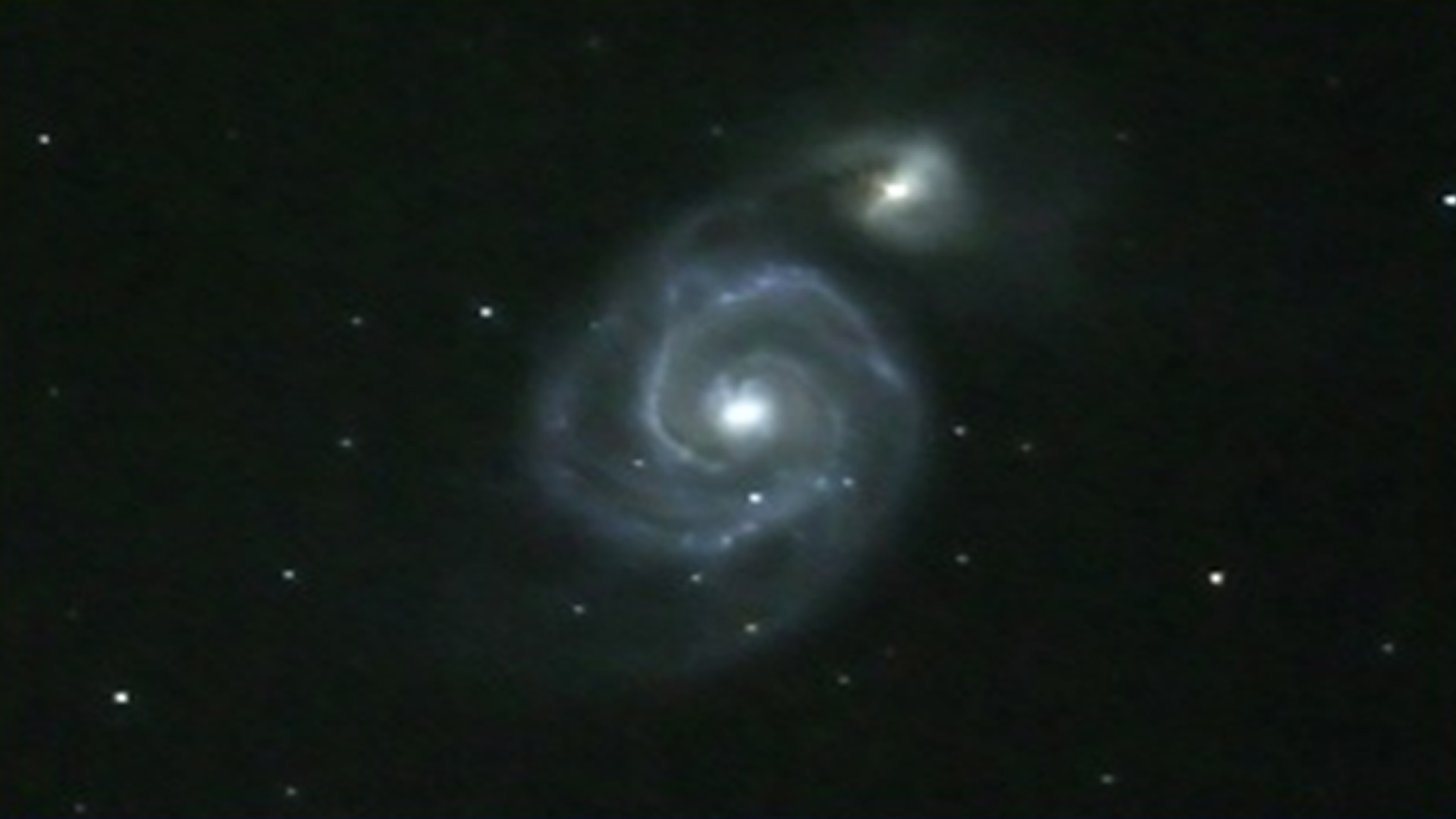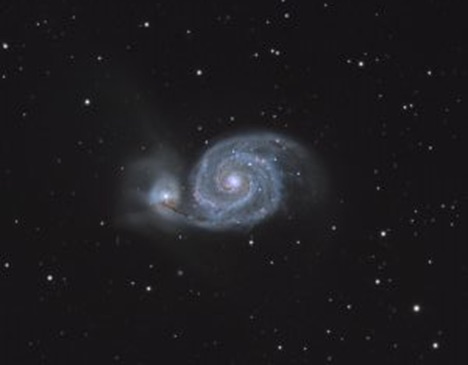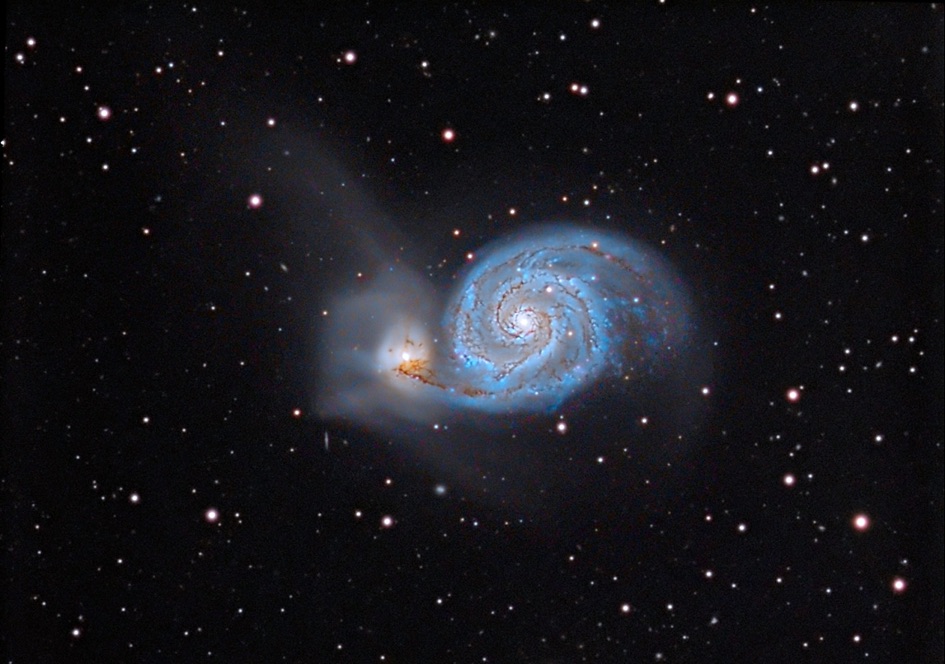Inside the cosmic vortex: the Whirlpool Galaxy M51
For some, it is the perfect example of a spiral galaxy, for others it’s one of the most popular photography subjects in the spring night sky.
 The Whirlpool Galaxy (Photo by Tobias Dietrich from the Singen public observatory)
The Whirlpool Galaxy (Photo by Tobias Dietrich from the Singen public observatory)The Whirlpool Galaxy or Messier 51 in the constellation Canes Venatici is undoubtedly one of the most beautiful and compact deep sky objects.
But what is actually inside this vortex, which is almost 30 million light years away?
In this article we will provide a little more information about this object. So let’s head to the cosmic whirlpool!
Types of galaxies
M 51 is a so-called spiral galaxy, just like our Milky Way or the famous Andromeda Galaxy M 31. As a rough distinction, besides spiral galaxies, there are also elliptical, lens-shaped and irregular galaxies. In general, all galaxies are a collection of stars, gas nebulae, planetary systems, and cosmic dust clouds that are bound together by gravity and rotate around the galaxy centre. All the galaxies we can observe with a telescope are very far from our native Milky Way and are not connected to it. It is believed that there are up to a trillion currently observable galaxies! About 50 billion of these can be detected with the technology we currently have available.
 M 51 (Photo by Mike Behnke, Gelenau Observatory, Saxony)
M 51 (Photo by Mike Behnke, Gelenau Observatory, Saxony)The birthplace of new stars
The Whirlpool Galaxy’s spiral arms are particularly pronounced, and there is also a special feature – the smaller irregular companion galaxy NGC 5195 at the end of one of M 51’s outer spiral arms. Here you can see the difference between these two types of galaxies very nicely. A lot is happening within this cosmic maelstrom: M 51 is a very active stellar nursery and in its centre, the galaxy’s core, there is a super-massive black hole. In M51’s bright core, gas collisions and stellar explosions occur together with accretion - which produces radiation as matter is drawn into the black hole. In the outermost spiral arms many new young stars are created, which are therefore particularly hot, releasing strong emissions in the blue and white colour spectrum.
The bluish colours of ionised helium and fluorescent hydrogen are clear on astrophotography images:
 The whirlpool galaxy in the constellation Canes Venatici in an image rich in detail (JF Calvo Z36 Cancelada, Spain)
The whirlpool galaxy in the constellation Canes Venatici in an image rich in detail (JF Calvo Z36 Cancelada, Spain)The galaxy was discovered as early as 1773 as a diffuse fleck by Charles Messier, and was subsequently registered as object number 51 in his famous Messier catalogue. However, its unique spiral structure was only identified using a 180-cm mirror telescope in 1845, following advances in telescope technology.
The companion galaxy NGC 5195 was discovered in 1781, and Wilhelm Herschel later added it to his catalogue.
With a diameter of 89,000 light-years, M 51 is one of the larger spiral galaxies. From Earth, the Whirlpool Galaxy has an apparent magnitude of 8.1 and is best observed using telescopes with an aperture of 8" (200 mm) or more. Then the first details and the spiral structure become visible. You will find the object in the northern area of Canes Venatici, where it borders the Big Dipper. The easiest way to locate it is via the star Alkaid, the last star of the Big Dipper’s handle. The galaxy can be found around 4° south-west of there. Of course a dark country sky offers the best observing conditions, but the details of M 51 can also be reproduced on images from light-polluted areas using the appropriate filters. However, it is practically impossible to visually locate and observe the galaxy under a bright city sky.
Author: Jan Ströher
Jan is a linguist and product manager for our astronomy products.
Jan studied English, Romance languages and business administration and then worked as an account manager in the aviation industry. Since he was young, he has been interested in natural sciences, especially astronomy: at the age of 15, he made his first observations with a Newtonian telescope from his parents' balcony.
Jan loves the great outdoors, and besides astronomy, he is also interested in animals and meteorology. His favourite objects in the sky are the big planets, Wolf-Rayet nebulae and globular clusters.
Languages: German, English, Spanish

